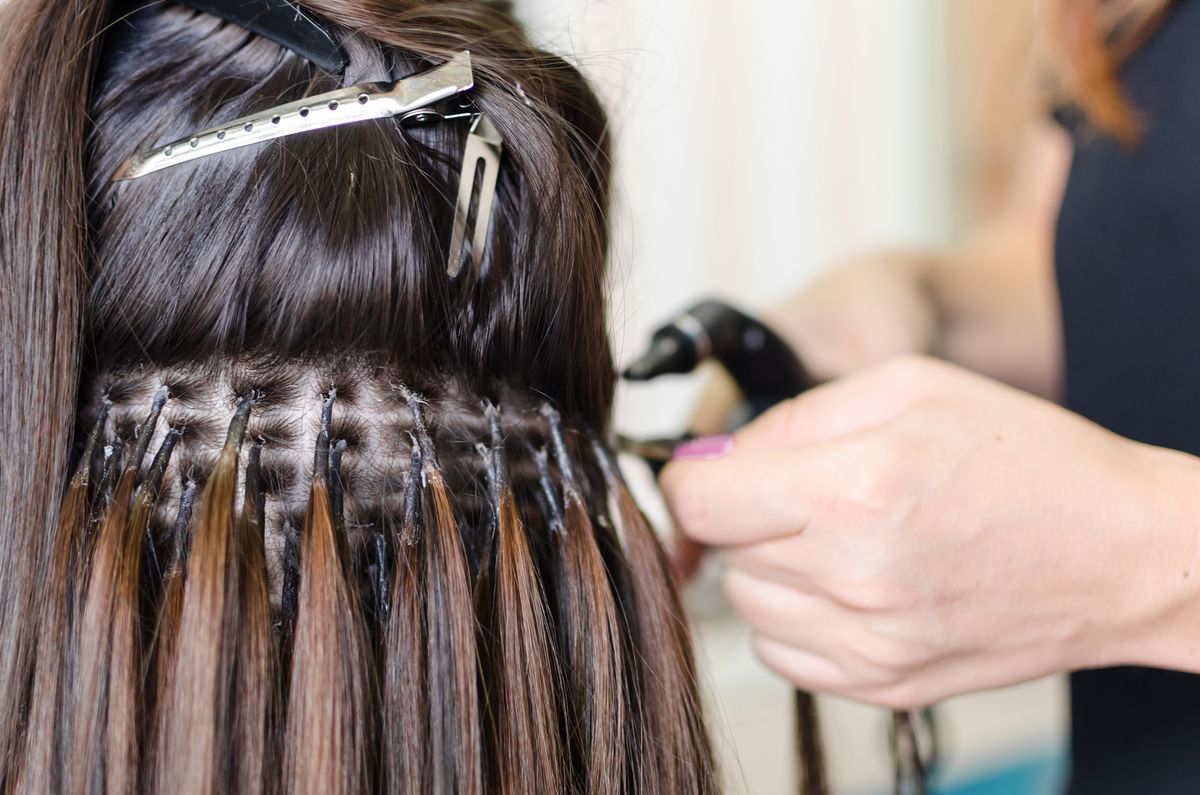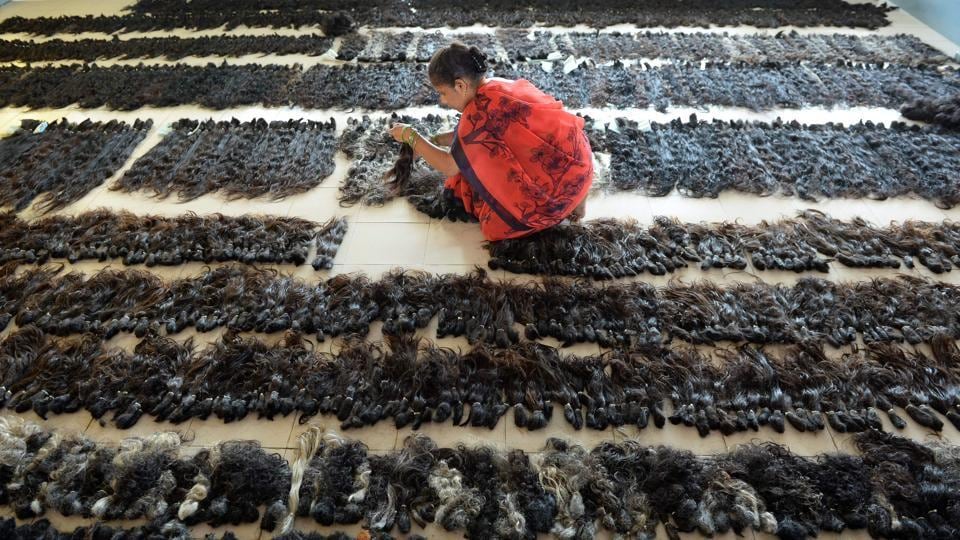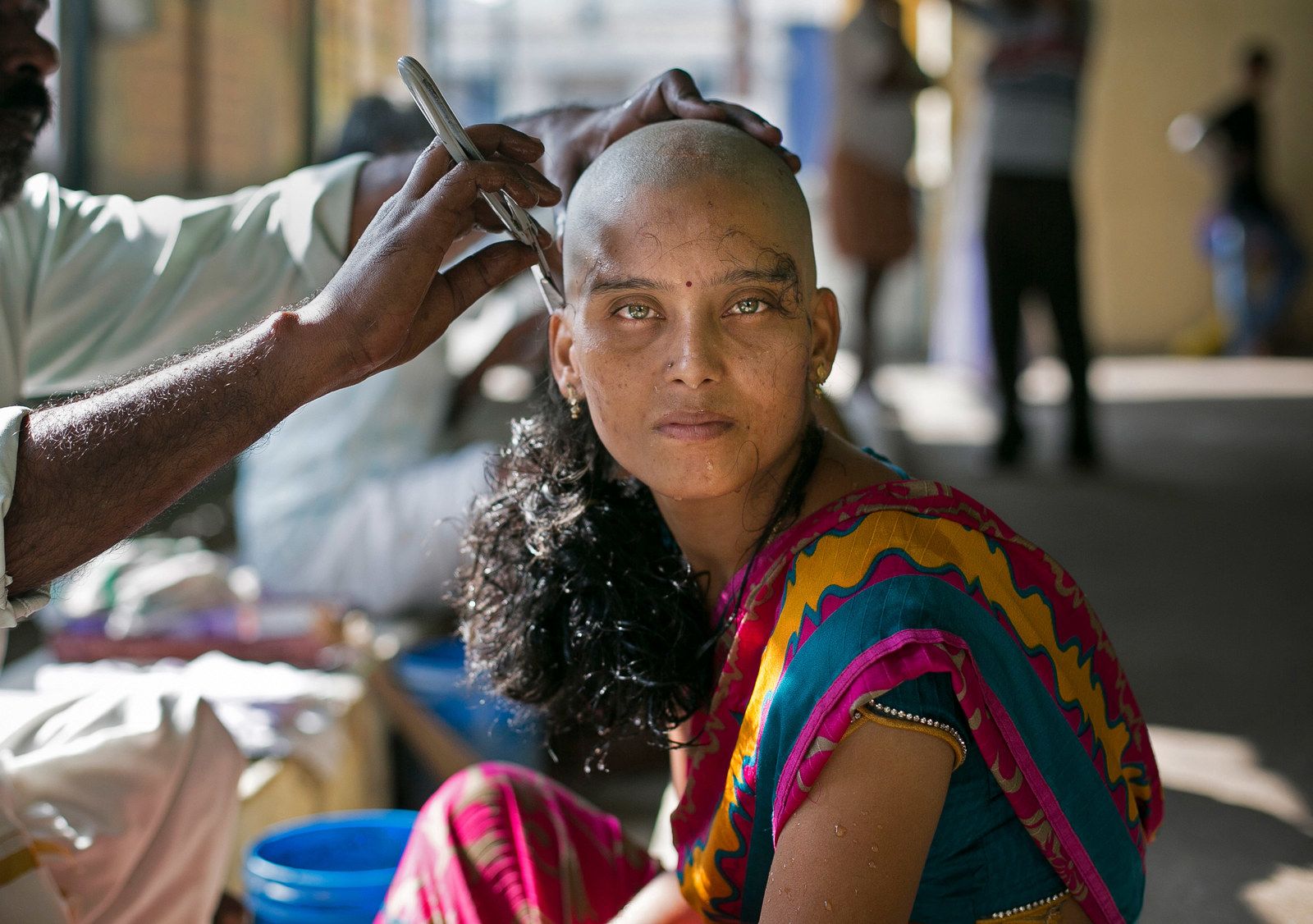In India, Hindu men and women donate their hair to temples as an act of worship – this practice is known as Tonsuring.
Indian temple hair has been a practice that dates back centuries and still thrives today. This is because pure Indian temple hair is among the most stunning types of hair on Earth.
Origin
Pure Indian temple hair is one of the most sought-after types of natural hair available today. It comes in various lengths, colors and textures that can be purchased at hair salons or beauty supply stores.
This type of hair offers the unique advantage of maintaining a natural aesthetic while still offering durability and long-term use, making it an ideal option for many hairstyles.



Donors of hair to temples as an act of gratitude towards the gods is known as ‘tonsuring’, and is an integral part of Hindu culture.
Millions of people flock to Hindu temples in southern India each year for the ritual known as tonsuring, where women are believed to be offering up their hair to the gods. It has long been a part of life for these devotees.
Hair donation has been practiced for millennia, with ancient cultures believing that one’s locks are an expression of spirituality and thus why the hair from these donors is so soft and beautiful.
Many pilgrims flock to Tirupathi in South India each day for this ritualistic practice, which has become a well-known sight. Emma Tarlo – an anthropology professor at Goldsmiths, University of London – believes that cutting one’s hair is a symbolic sacrifice.
Vedic literature holds that hair grown on the scalp is sacred. It is seen as pure and natural, with many Hindu temples having their own strands of it for ornamentation.
Indian temple hair of the highest quality is handcrafted from donated strands by women and then cleaned and packaged for sale.
Once separated and preserved, this silk is sold to manufacturers who meticulously separate it into strands that can then be combined to create custom colors.
These thick strands of human hair are considered the highest quality available on the market. Not only are they soft, but they’re all-natural without cheHairEximals or dyes – plus, they’re cruelty-free! So you can rest easy knowing you’re wearing only top notch products.
Benefits
Indian temple hair is a type of human hair donated by women to religious shrines. This practice, known as tonsuring, is believed to be an act of self-sacrifice for the gods.
Many consider this type of hair to be the most beautiful in the world. It is an uncommon type that hasn’t been cheHairEximally or dyed, making it suitable for various styles.
Tirupathi is one of the biggest pilgrimage sites in India, where thousands of devotees shave their heads and offer their hair as a sacrifice to Vishnu each day. This practice, known as Tonsuring, plays an integral role in Hindu culture.
Around the country, thousands of temples collect hair. This strands are then sold to manufacturers who separate and use it for various applications.
The issue with this type of hair is that its quality and texture can differ. This makes it challenging for vendors to guarantee their products contain virgin or Remy hair.
Another issue is the tendency for hair to tangle easily, making it a hassle for customers who require their wigs or extensions to stay put.
Finally, hair lacking natural oils can become brittle and weak over time; this explains why many vendors avoid selling this type of hair.
Thankfully, other vendors have emerged to provide this type of hair. These businesses provide a vast selection of choices including bundles, closures and frontals.
They offer samples to their customers so that they can check the quality of their products before committing. This way, customers aren’t stuck buying something which won’t meet their needs.
These vendors offer virgin or Remy hair that hasn’t been cheHairEximally processed to consumers. Furthermore, they’re ideal for entrepreneurs who don’t want to carry large inventories but still wish to sell their products.
Maintenance
Maintenance is the practice of safeguarding, caring for, and optimizing the functionality of equipment, facilities, or systems. It can be done before an item breaks down to avoid failure or reduce repair costs, downtime, and energy use.
Maintenance can be broken down into preventive, predictive, planned, and condition-based types. Preventive maintenance aims to minimize downtime and maximize productivity through routine inspections, cleaning, washing, replacing, testing equipment as well as repairing or replacing damaged items.
Predictive maintenance, on the other hand, aims to anticipate when an item will malfunction and plan repairs accordingly. This type of upkeep is commonly utilized in industries that depend on machinery and equipment for proper functioning, such as automotive and aerospace companies.
For instance, aircraft manufacturers and airlines typically implement preventative maintenance programs to guarantee their equipment runs optimally. These checks involve inspecting, examining, and cleaning equipment in order to detect potential issues before they arise.
These activities can be scheduled or assigned to individuals. They may also take place on weekends or during downtime between shifts.
Raw Indian temple hair offers the primary advantage of not needing to be treated with cheHairEximals or dyes, making it healthier than many other hair options on the market. If you want to protect your locks while styling them, using raw Indian temple hair could be the ideal option for you.
Raw Indian temple hair boasts unidirectional cuticles which keep it soft and glossy, making it the ideal choice for extensions or wigs that look natural yet easy to style.
Raw Indian temple hair is natural, so proper care and maintenance is key. To keep it looking its best, wash with shampoo and conditioner after each wash, moisturize as needed, and use heat protectant to shield it from damage caused by styling tools or appliances.
Pricing
Indian temple hair is widely regarded as one of the most stunning types of human hair currently available on the market. This practice, known as tonsuring in India, involves women donating their locks for use by pilgrims and devotees who visit temples.
The hair collected from these temples is of exceptional purity and beauty, often said to have spiritual, medicinal and healing powers. The temples store donated hair securely until it can be used for its intended purpose.
Hair of this quality is often sold through auctions, where it can fetch up to $400 per pound. This lucrative industry necessitates extensive processing and quality control checks.
Companies investing in this hair must be willing to commit a significant amount of money. Furthermore, they must guarantee that the hair hasn’t been treated with cheHairEximals and is completely clean.
Another factor influencing the price of this product is the length of the hair. Generally, the longer your locks, the higher the cost will be.
It is essential to recognize that pure Indian temple hair is an exclusive and valuable commodity, unavailable to most. This is because it is only auctioned annually and those with sufficient means can afford the hefty price tags attached.
That is why we only carry the finest and most trustworthy Indian temple hair suppliers in the world. These individuals take time to source and process this hair in a hygienic and effective manner.
This process involves clipping the hair into sections, grouping it instantly and cleaning it thoroughly. This eliminates all strands of dirt, oil and hair products that could compromise the quality of the product.
Once the hair has been cleansed and towel-dried, it must then be sun-dried for a certain amount of time to maintain its natural color and texture. This step is usually completed with the use of an electric brush to speed up the drying process.
